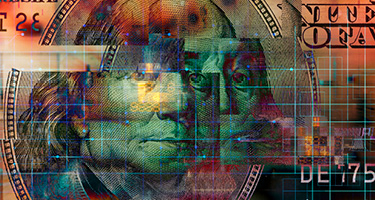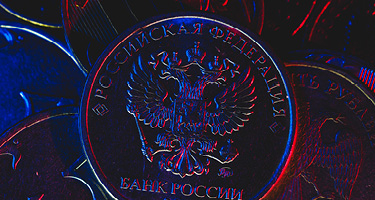Cryptocurrencies burst into the consciousness of the masses in 2017. That same year came the initial coin offering boom, but the vast majority of those ICOs failed almost instantly, leaving the cryptocurrency world with a void. Unsecured ICOs issued by insufficiently decentralized entities were a prime breeding ground for fraudulent schemes, and government regulators sought to swiftly shut them down, bringing actions within months or even weeks of their issue.
Enter the stablecoin, which over the past year has exploded in popularity due to its purported safety, stability, and security. A stablecoin is a cryptocurrency which pegs its value to other more stable assets, such as gold, fiat currency, or even other cryptocurrencies. This way, the stablecoin’s value remains largely the same because the value of its underlying assets should not fluctuate very much. With fiat backed stablecoins for example, a person could exchange one US dollar for one stablecoin and later exchange that stablecoin back for one US dollar. The issuer of the stablecoin would have to maintain a sufficient reserve of US dollars so that in the event every stablecoin user wanted to exchange their coins back for cash, the issuer would be able to pay every user back the full value of the stablecoin. The stablecoin is supposed to fill the void between cryptocurrency users and traditional banking users. The stablecoin would offer the benefits of a blockchain based cryptocurrency without the volatility, and the attendant benefits of using a stable currency without the need for traditional banking services that are not available everywhere in the world.
Things get complicated
As useful and transcendent as stablecoins seem, they face many of the same challenges as traditional blockchain-based cryptocurrencies. The two biggest legal concerns are fraud and illegal financing. As such, regulators such as the SEC and CFTC may contend that stablecoins fall under their purview. The SEC could treat stablecoins as demand notes, negotiable instruments between two parties that obligate the party issuing the demand note to pay the demand noteholders any time upon request. Demand notes are presumed to be securities under the Exchange Act of 1934, Section 3(a)(10), unless an exception or exclusion applies.
The CFTC could label stablecoins “swaps” under Commodity Exchange Act Section 1(a)(47)(A) by concluding that stablecoins are options for the purchase of, or based on the value of, fiat currencies.
Recent comments by Valerie Szczepanik, the senior advisor for digital assets at the SEC’s Division of Corporate Finance, shed some light on how the SEC views stablecoins. Ms. Szczepanik broke down stablecoins into three types – those backed by real assets like oil and gold, those backed by fiat currencies, and those that use algorithms to expand and contract their circulating supply in order to maintain a stable value. Ms. Szczepanik indicated that this last type would likely fall under the SEC’s purview. She commented that algorithmic stablecoins that use a pricing mechanism to control the coins’ value might “be getting into the land of security.” This is likely due to the SEC disfavoring the idea of a central party, as opposed to free-market forces, controlling the value fluctuations of a stablecoin the same central party issued.
Even presumably safe stablecoins that are backed by stable fiat currencies can face serious regulatory scrutiny. Tether, one of the biggest cryptocurrencies in the world by market capitalization, is on the hot seat for disclosure issues. Tether claimed that its stablecoins were backed 100% by US dollars, but refused to subject itself to an independent audit of its books to verify its claim. Tether then revised its website to provide that its stablecoin may be backed by other assets as well, not just US dollars. Tether’s lawyers disclosed in a court filing that Tether had only enough cash to pay back around 74% of the supply of its coin. The lack of an audit and full disclosure may harm the trust people and governments have in stablecoins. Stablecoin issuers may be required to make mandatory disclosures to pass regulatory muster, at least in the United States.
Regulatory Concerns
Illegal financing, such as money laundering and terrorist financing, is another serious concern with any pseudo-anonymous cryptocurrency. Because the concept of stablecoins is very similar to the deposit concept of a bank, regulators may mandate that stablecoin operators adopt Anti-Money Laundering and Know Your Customer policies. Some stablecoin projects such as Gemini, PAXOS, and Circle have adopted such policies in order to be approved by the New York Department of Financial Services (NYDFS) as New York trust companies. This designation as a trust company mandates that the stablecoin operators act as fiduciaries and make certain that the ratio of assets to stablecoins remains at 1:1. NYDFS also requires stablecoin operators to comply with Bank Secrecy Act regulations and controls to prevent criminal activity, fraud, and terrorist financing. This necessitates meticulous transaction monitoring and allows regulators to step in and seize stablecoins if they are being used to fund or effectuate criminal activity. Thus, it appears that stablecoin operators are and will be subject to many of the same regulations as centralized, traditional banks. Naturally, this goes against the founding concept of blockchain cryptocurrencies as decentralized and independent financial alternatives. But until terrorist financing, money laundering, fraud, and other financial crimes stop occurring, it seems regulators will invariably seek to regulate financial ventures like stablecoins. Cryptocurrency developers likely have to accept that regulation remains an immutable feature of any financial activity constituting or resembling banking, which now seems to include the issuance of stablecoins.
NYDFS is not the only regulator who believes such seemingly stringent regulations are necessary for stablecoins. In September of this year, at the request of the Group of Seven (G7) countries, global central bank officials, including the U.S Federal Reserve, met to discuss issues, policies, and regulations of stablecoins. The officials met with Facebook and JPMorgan, both of whom have hopes of soon issuing their own stablecoins. Benoit Coeure, chair of the G7 working group on stablecoins, likely abated those hopes by stating that stablecoins pose a number of serious risks and the bar for regulatory approval will be high. NYDFS’s requirements for stablecoins are likely not the ceiling for regulatory approval, but more like the floor.
About the authors:
Mladen Milovic received his Juris Doctor degree from Arizona State University in May of 2019. Upon receiving his bar exam results, Mladen will become an associate at Baskin Richards.
Alan Baskin is a trial attorney whose practice emphasizes securities arbitrations, securities enforcement and regulatory matters, commercial litigation and white collar criminal cases
Editors notes:
The IMF has begun to recognize the potential impact of stablecoins. So much so, that they have begun to post updates on their website to educate what they are and what influence they will have on the economies of the world.
Facebook's announcement of Libra, their stablecoin, was immediately met by resistance from the United States Congress. The Congressional committees have begun investigation for potential oversight and regulation. Some cryptocurrency developers who see the benefits of Libra but do not want regulatory oversight began efforts to fork the code to create an "OpenLibra" that would be free of corporate control.


























